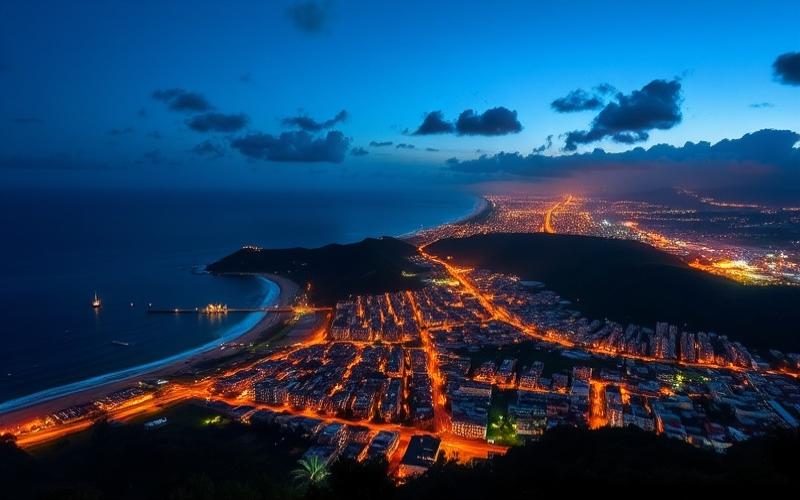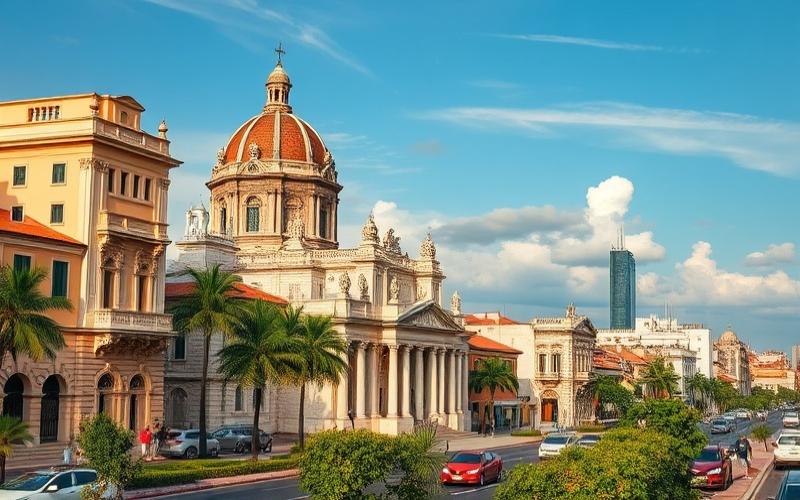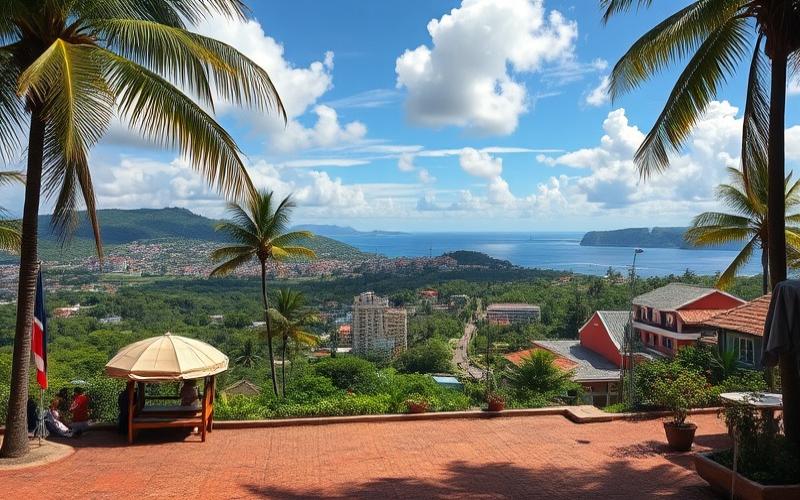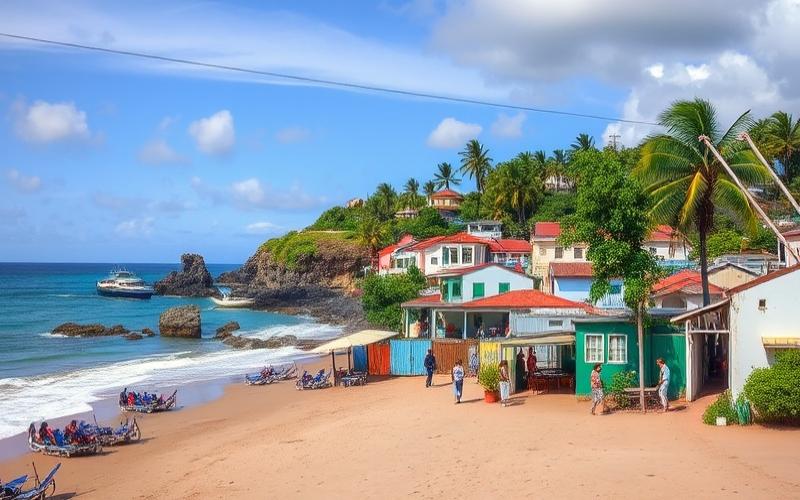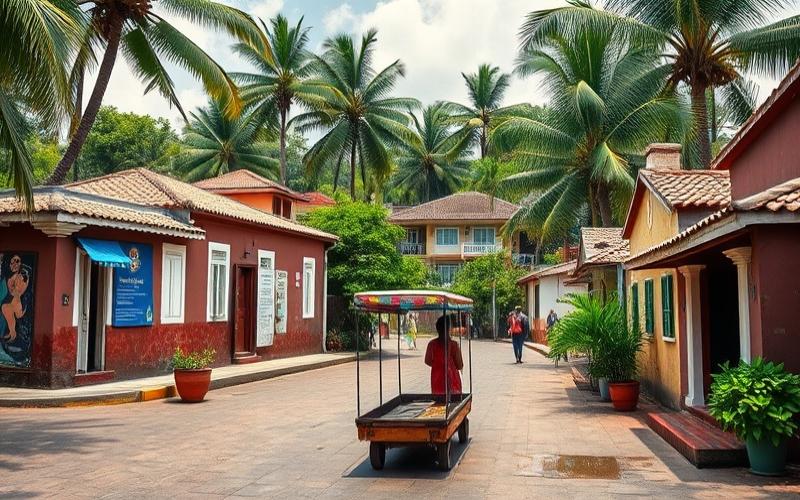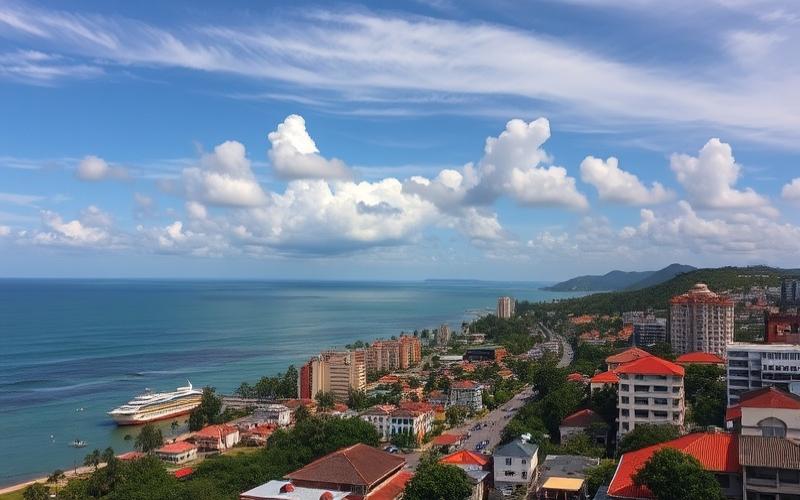
 Published on and written by Cyril Jarnias
Published on and written by Cyril Jarnias
The Dominican Republic, known for its paradise beaches and tropical climate, is experiencing notable growth in the real estate sector, attracting both local and foreign investors.
This development is reflected in the emergence of new economic trends, particularly the phenomenon of “dark stores”—commercial spaces without visible storefronts but essential to the modern supply chain.
These discreet and innovative structures are redefining commerce rules and represent an untapped opportunity for ambitious entrepreneurs.
Understanding how these state-of-the-art warehouses fit into the Dominican urban and economic landscape is essential to anticipate the next wave of innovations in the country.
“Dark Stores”: A Real Estate Revolution in the Dominican Republic
A dark store is a physical space, often a converted warehouse or store, used exclusively for preparing and collecting online orders. Unlike traditional stores, it’s not open to the public: no customers enter to make in-person purchases. Dark stores are optimized to maximize logistical efficiency (dense shelving, absence of storefronts) and enable rapid order preparation through automation or organization focused on picking.
| Characteristics | Dark Store | Traditional Store |
|---|---|---|
| Customer Access | Closed to the public | Open to customers |
| Main Function | Online order preparation | Direct sales |
| Typical Location | Industrial areas/outskirts | Urban centers/commercial areas |
| Internal Organization | Logistically optimized | Customer experience optimized |
| Hours | Flexible/24-hour possible | Based on peak hours |
Main Differences:
- No display or promotional space.
- Larger inventory and organization focused on processing speed.
- Ability to operate 24/7 without customer presence constraints.
Influence on the Real Estate Market in the Dominican Republic
Dark stores are significantly altering real estate demand:
Opportunities:
- Increased value of previously underutilized industrial or peripheral areas.
- Growing demand for modern warehouses in major cities (Santo Domingo, Santiago).
- Creation of new economic hubs around logistical centers.
Challenges:
- Upward pressure on commercial rents in specific areas.
- Potential devaluation of traditional commercial spaces in city centers if not effectively repurposed.
Comparative Impact:
| Real Estate Type | Trend Related to Dark Stores |
|---|---|
| Classic Commercial | Stagnant/possible decline in demand |
| Warehouses/Logistics | Strong increase in value/demand |
| Nearby Residential | Variable valuation depending on nuisance |
Examples and Implementation Strategies
In Santo Domingo and Santiago, several local and international companies have established their first dark stores in industrial areas near downtown to ensure fast delivery while optimizing rental costs. Brands prioritize:
- Proximity to major roadways
- Large space allowing varied storage
- Easy access for logistics fleets
Some local food chains are even converting their former unprofitable sales points into mini-hubs dedicated to e-commerce food sales.
Opportunities & Challenges for Local Real Estate
Opportunities:
- Real estate redevelopment (transforming obsolete stores)
- Stimulation of logistics employment
- Revitalization of industrial neighborhoods
Challenges:
- Increased specialization of real estate inventory
- Land risk if massive shift to e-commerce (commercial vacancy)
Response to Logistical Needs & Consumption Evolution
Dark stores enable:
- Ultra-fast delivery adapted to the explosion of food/pharmaceutical/fashion e-commerce
- Attractive “click-and-collect” solutions without congesting traditional physical points
- Better centralized inventory management reducing product shortages
The shift towards more online shopping accelerates this phenomenon; Dominican consumers are gradually adopting these fast, no-direct-contact modes with physical locations.
Future Perspectives & Expected Trends
Likely trends:
- Multiplication of small urban hubs (“micro-dark-stores”) to serve densely populated neighborhoods;
- Growing hybridization between classic commercial spaces and digital platforms;
- Expected positive influence on related sectors: urban transport/logistics, supply chain technologies;
In the medium term, this transformation could inspire the emergence of new hybrid models blending reinvented traditional commerce (showrooming) and automated distribution—thus impacting not only real estate but the entire local economic chain.
The accelerated development of “dark stores” therefore represents a profound transformation of the Dominican real estate sector—generating as many opportunities as structural challenges in the face of a new digital landscape.
Good to Know:
“Dark stores” are warehouses designed to prepare and ship online orders more efficiently, with no direct service to the public, unlike traditional stores. In the Dominican Republic, their emergence is changing the real estate landscape by stimulating demand for affordable logistics spaces, often located on the outskirts of major cities like Santo Domingo and Santiago, thus affecting commercial real estate prices while relieving pressure on downtown areas. Companies like Freshop and Supermercados Bravo have already established dark stores in strategic locations to optimize logistics and respond to evolving consumer preferences towards faster, more convenient shopping options. This creates opportunities for developing suitable infrastructure, but also challenges, such as increased urban congestion and the need to reform zoning policies. In the future, continued expansion of this model is expected, potentially influencing other economic sectors like transportation and employment, with a similar trend potentially emerging in neighboring Caribbean islands.
Urban Warehouse Implementation Strategies
Key Factors Influencing Urban Warehouse Location Choices in the Dominican Republic:
- Accessibility: Major roadways connecting ports, airports, and urban centers facilitate rapid goods distribution. Cities like Santo Domingo and Santiago benefit from developed transport infrastructure, including soft mobility projects (cable cars, monorails, electric buses) that help decongest dense urban areas and optimize urban logistics.
- Real Estate Costs: Rents and land prices vary significantly based on proximity to logistics hubs and commercial areas. Land pressure is stronger around large urban areas, encouraging the search for spaces on the outskirts while remaining close to distribution routes.
- Proximity to High Population Density Areas: “Dark stores” are primarily established near densely populated neighborhoods to guarantee short delivery times and optimize last-mile costs.
| Factor | Importance for Urban Warehouse Implementation |
|---|---|
| Accessibility | Reduces delays and logistics costs |
| Real Estate Costs | Optimizes operational profitability |
| Population Density | Increases demand and distribution responsiveness |
Examples of Dominican Cities Where Urban Warehouses and “Dark Stores” Have Recently Been Established:
- Santo Domingo: Capital and main economic center, with high urban density and growing demand for fast delivery.
- Santiago de los Caballeros: Second largest city in the country, also equipped with new logistics and transport facilities.
- Caucedo: Strategic port area, recently modernized with port expansion and creation of new logistics free zones.
Logistical Considerations Specific to the Dominican Republic:
- Road Infrastructure: Major investments are modernizing highway routes, effectively connecting ports (like Caucedo) to urban and industrial areas. However, urban congestion remains a challenge in large cities, hence the importance of multimodal solutions (cable cars, monorails).
- Local Regulations: The incentive framework, particularly in free zones, favors the establishment of logistics warehouses. Regulations also encourage the integration of sustainable practices and facility modernization.
- Sustainable Development: The rise of energy-efficient buildings and “green” logistics solutions is becoming a location criterion to meet the requirements of local authorities and international investors.
Economic and Social Impact on Urban Communities:
- Creation of direct (logistics, order preparation, maintenance) and indirect (transport, services) jobs.
- Transformation of the urban fabric with the modernization of formerly industrial or underutilized neighborhoods.
- Potential risks: increased traffic flows, heightened land pressure, and changes in urban uses, potentially causing tensions with residents in affected neighborhoods.
Forecasts on Implementation Strategy Evolution in the Medium and Long Term:
- Medium Term: Multiplication of urban warehouses and “dark stores” in main urban areas, driven by e-commerce growth and logistics infrastructure modernization.
- Long Term: Trend towards energy optimization and integration of digital solutions (smart buildings, automation), with gradual extension to secondary cities as demand intensifies and infrastructure improves.
Key Takeaways
- Urban warehouse implementation in the Dominican Republic follows a logic of accessibility, cost control, and proximity to urban demand.
- Major cities like Santo Domingo, Santiago, and Caucedo concentrate recent investments.
- Rapid infrastructure evolution and e-commerce pressure suggest sustained growth of the “dark store” phenomenon in the coming years.
Good to Know:
In implementing urban warehouses in the Dominican Republic, accessibility, attractive real estate costs, and proximity to densely populated areas are crucial for optimizing distribution, especially in cities like Santo Domingo and Santiago. Additionally, the quality of road infrastructure and compliance with local regulations play a determining role in efficient logistics. Expanding “dark stores” in these regions project a positive economic impact by offering jobs, although concerns persist about their influence on traditional commerce. In the medium and long term, continuous adaptation of implementation strategies is expected to meet growing demand and urban developments, with particular emphasis on energy efficiency and sustainability in response to local needs and environmental challenges.
Investments and Perspectives in Local E-commerce
Current Investment Trends in Local E-commerce in the Dominican Republic
The Dominican e-commerce sector is experiencing rapid growth, primarily driven by post-pandemic shopping behavior evolution and the rise of digitalization. Recent investments are directed towards optimizing urban logistics, particularly through the development of dark stores—urban micro-warehouses reserved for preparing and quickly delivering online orders.
Operation and Characteristics of Dark Stores
| Characteristic | Dark Store | Traditional Store |
| Customer Access | No (reserved for logistics) | Yes |
| Location | Urban centers/high density | Commercial areas/downtowns |
| Main Function | E-commerce preparation/delivery | Direct sales |
| Hours | Often 24/7 | Limited |
- Orders are placed online.
- Order pickers operate in spaces not accessible to the public.
- Fast delivery, sometimes in under 30 minutes.
- Storage of 1,000 to 2,000 references, across 100 to 300 m².
Advantages of Dark Stores for the Local Market
- Reduced delivery times thanks to stock proximity to residential and commercial areas.
- Supply chain optimization: agility, automation, reduced logistics costs and travel.
- Response to fast delivery demand, which has become a major criterion for urban consumers.
- Decreased urban pollution through optimized delivery routes.
Challenges and Impacts on the Dominican Real Estate Market
- Increased pressure on urban real estate: the search for strategic locations for dark stores increases demand and prices for well-located premises, creating scarcity for other commercial or residential uses.
- Transformation of the urban fabric: displacement of some traditional activities to the periphery, risks of commercial desertification in certain neighborhoods.
- New social and regulatory tensions: debate on coexistence between urban logistics and quality of life, potential increase in delivery traffic, noise pollution, etc.
- Emerging regulation: authorities are beginning to more strictly regulate the establishment of these spaces to preserve neighborhood functional mix.
Examples of Companies and Influence on Local Real Estate
Major local and regional retail brands, inspired by Amazon and Walmart models, are investing in dark stores to accelerate their omnichannel transformation.
Several Dominican supermarket chains and fast delivery platforms have opened micro-warehouses in central neighborhoods, causing a rise in commercial rents and increased competition for suitable urban spaces.
These investments lead to a reorganization of the real estate market, with revaluation of small logistics spaces and renewed interest in previously neglected premises.
Evolution Perspectives
- Changes in consumer behavior: demand for express delivery is expected to strengthen, increasing the need to multiply dark stores in densely populated areas.
- Government policies: regulatory measures could emerge to limit dark store concentration and preserve urban balance (zoning, quotas, environmental standards).
- Logistical innovation: development of hybrid models (click & collect, urban drive), increased automation, and shared logistics spaces to limit land footprint.
Key Takeaways:
The rise of dark stores is redefining the Dominican e-commerce landscape and exerting growing influence on the urban real estate market, both through the valuation of logistics spaces and the need for regulatory frameworks adapted to new uses.
Good to Know:
The rapid growth of e-commerce in the Dominican Republic has stimulated interest in dark stores, distribution centers hidden from public view that optimize local deliveries. Companies like PedidosYa and Supermercados Nacional have recently invested in this model to meet growing demand for convenience. Although these infrastructures reduce logistics costs and offer fast delivery, they pose challenges in terms of location and real estate regulation, as legal aspects of using urban spaces for commercial purposes are often unclear. The increasing adoption of this trend promises to push real estate prices in strategic areas, while requiring regulatory updates to balance urban impact. The shift towards more online shopping could be influenced by favorable government policies and better digital infrastructure, which will shape medium-term prospects for this sector within the Dominican real estate market context.
Disclaimer: The information provided on this website is for informational purposes only and does not constitute financial, legal, or professional advice. We encourage you to consult qualified experts before making any investment, real estate, or expatriation decisions. Although we strive to maintain up-to-date and accurate information, we do not guarantee the completeness, accuracy, or timeliness of the proposed content. As investment and expatriation involve risks, we disclaim any liability for potential losses or damages arising from the use of this site. Your use of this site confirms your acceptance of these terms and your understanding of the associated risks.

